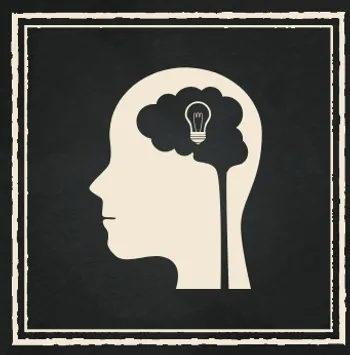
What? vs Why?
It was September of 2009 and I am waiting out in a cold moldy hallway for my first practical exam of my physical therapy school career. 12 of my classmates are waiting in the hallway with me, some pacing, some trembling, and some just sitting and staring at the wall. We all look as if we haven’t slept for three days. (Possible that some of us hadn’t) Practical exams are the physical therapy student’s nemesis. I’m not entirely sure why we build them up to be such a huge deal, but none the less we do. (Can I get an amen from PT’s and/or PT students reading this?!). Our professors setup a schedule so every 20 minutes one of us walks the dreaded 50ft to our demise…I mean to our future. This particular practical topic was palpation of the upper extremity. Thinking about it now, I just laugh because I’m not so sure why I was so worked up about it. When it was my turn to enter the room, I held my head high and took in a deep breath that wasn’t to be let out until I was done. I drew the three cards that held the items I was to palpate. I slowly flipped over the first card to see coracoid process. Yessss!!! This one was an easy one…I knew right where it was and how to find it. I quickly asked my classmate to remove his shirt and proceeded to demonstrate to my examiner how to palpate the structure. I just knew I had nailed it…but...then the questions began. “How do you know you are actually on that structure versus a different boney landmark?” “Why is it important to know how to palpate that structure?” I honestly felt like the room became pitch black and the walls shrunk to a 4ftx4ft area.
Last week, I talked about the question “Why?” and how it creates such a strong emotional reaction when we are on the other end of that question. As I have reflected in my own life of my various reactions to that question, as well as, the reactions my students give me now when I ask them why, I began to wonder if there is anything we can do to circumvent this emotional reaction. I think this can be combated in two different ways.

1. Reframing in our mind
I am a true believer in taking ownership of our own faults and miscues. I don’t always do a good job of owning up to my mistakes or how I misinterpret things, but I truly try to get there. Reframing our mind is a way we can take ownership in regard to our reaction to the question “Why?”. It has been explained that the question “Why?” actually correlates with the limbic part of your brain. Biologist explain that the limbic brain is your emotional brain. Do you ever get a “gut” feeling about something? That is your limbic brain communicating with you. It is the part of the brain that controls decision making, but it actually isn’t the part of the brain that controls language. That is why when you say, “I just have a feeling” you are actually speaking for your limbic brain. We have to leverage this part of the brain and its emotional responses to create the type of response we want. Next time you get asked the question, “Why?” try reframing it in your mind by asking a follow-up question. You can ask the sender of the question a reframed version of their question, such as “Do you mean to ask how I came to my conclusion?” or “Are you asking what the reason behind my behavior is?” The goal of the question “Why?” is typically to get to the heart of your decision making, to reveal the thought process that went along with your output. By resetting our mindset around the question, we can diffuse our emotional reaction and produce the calm and collected response the sender is asking for.

2. Reframing the question
As much as I believe we have to take ownership of our own faults, I also think as senders in communication we can do our part to diffuse certain reactions and promote positive ones. I see this most often now that I am in the role of examiner with PT students. In many of the examining situations, emotions are high. Our students by in large are very well prepared and very successful in producing the outcomes we are looking for, but I want to make sure they aren’t just robots. Whether it is a success or a failure, asking the student to reflect and identify what was the thought process that led them to the endpoint is what we as educators need to do in order to identify learning. Asking the question why just seems to easily fit, however, what if we choose to ask it in a different way? If we want to uncover a thought process or identify what motivated the behavior we can actually ask the question “What?” instead of “Why?” For example, instead of asking “Why did you choose that special test?” we can reframe it to “What about that particular test makes it good for ruling in your diagnosis?” or “How does this test identify the diagnosis you are looking for?” We can even just ask the student to talk us through their thought process instead of asking “Why did you do it that way?” Using what, how, when, which and where are great ways to reframe your question without getting the emotional response that “Why?” evokes.
My first practical was not one of my finest hours. I wish I could say after I was asked the question, “Why is it important to know how to palpate that structure?” that I was able to reframe the question and calmly respond. Unfortunately, I called my examiner Satan…to his face. His response luckily was a good laugh and a follow up question of “What structures attach there?” I have learned a lot since reflecting on my reaction and his reaction and I did end up passing the practical and PT school without calling anyone else Satan again.
What are some ways you can reframe how you hear the question “Why?”? How do you plan to reframe your question asking in the future?